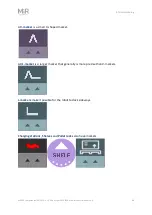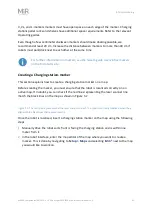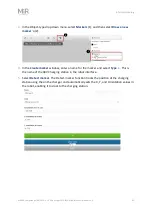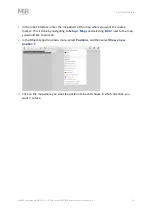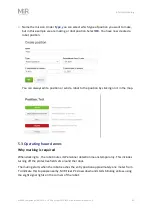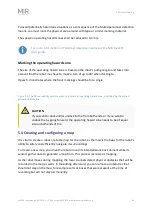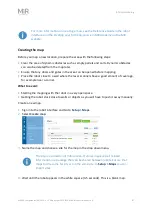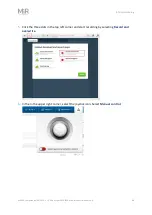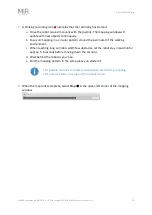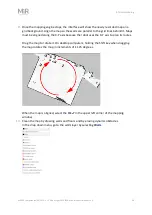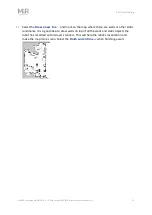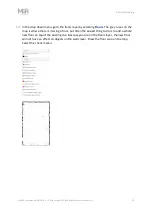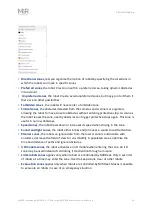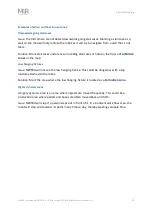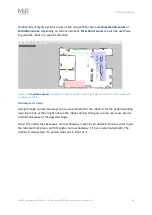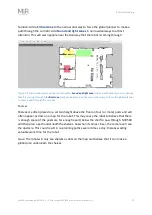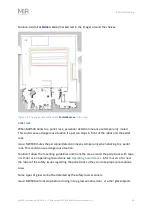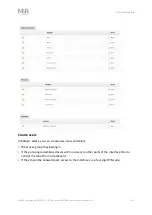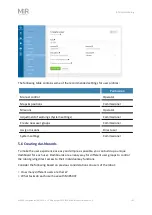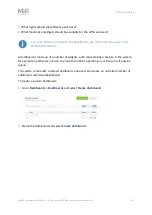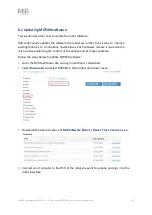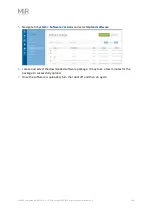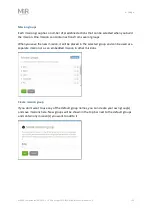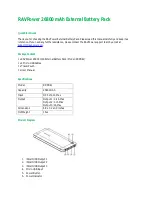
5. Commissioning
MiR500 User guide (en) 09/2019 - v.1.3 ©Copyright 2018-2020: Mobile Industrial Robots A/S.
94
•
Directional zones
, lets you organize the motion of robots by specifying the directions in
which the robots can move in specific zones.
•
Preferred zones
, the robot tries to run within a preferred area, taking dynamic obstacles
into account.
•
Unpreferred zones
, the robot tries to avoid unpreferred zones, but may go into it them if
there are no other possibilities.
•
Forbidden zones
, the robot will never enter a forbidden zone.
•
Critical zones
, the obstacles detected from the cameras and scanners are ignored,
allowing the robot to move close to obstacles without entering protective stop. As soon as
the robot leaves the zone, nearby obstacles can trigger protective stops again. This zone is
useful in narrow doorways.
•
Speed zones
, the robot slows down or increases its speed when driving in the zone.
•
Sound and light zones
, the robot either blinks and/or makes a sound to catch attention.
•
Planner zones
, the robot can ignore data from the laser scanners and localize with
encoders, decrease the field of view to run smoothly in populated areas, optimize the
time and distance of paths and ignore obstacles.
•
I/O module zones
, the robot activates an I/O module when entering the zone. An I/O
zone may be used instead of controlling I/O activation through a mission.
•
Limit-robots zones
applies only when robots are controlled by MiRFleet. Only a set limit
of robots at a time may enter the zone. Used to keep a zone clear of other robots.
•
Evacuation zones
applies only when robots are controlled by MiRFleet. Makes it possible
to evacuate all robots in case of an emergency situation.

